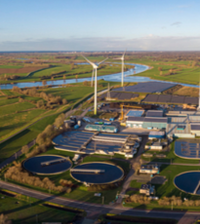Solution: “Green Hydrogen” Certification
Solution: “Green Hydrogen” Certification
"Green Hydrogen" Certification
Procedure for certifying the CO2 emissions of a hydrogen production facility
- 1
On-site inspection
- 2
On-site audit
- 3
Verification of the determination of CO2 emissions and balance-based audit of the electricity supply relationship
- 4
Preparation of the audit report (checklist)
- 5
Certificate “Hydrogen produced from renewable energies”
Grundlagen Zertifizierung C02-Emissionen einer Wasserstoffproduktion
– Checkliste TÜV AUSTRIA zur Zertifizierung der CO2-Emissionen
– ÖNORM EN ISO 14064-2
– ÖNORM EN ISO 14067
Green hydrogen as a promising energy source for the future::
Hydrogen is one of the most promising future options for phasing out fossil energy quickly and economically. Whether as a fuel in the transport sector, as intermediate storage for renewably generated electricity or as a substitute for natural gas. Hydrogen does not cause a greenhouse effect and therefore has the potential to make a decisive contribution to the energy transition.
“Green hydrogen” from climate-friendly production
The “Green Hydrogen” certification scheme provides independent proof that hydrogen produced from renewable sources has significantly lower greenhouse gas emissions than conventionally produced hydrogen or fossil fuels. Green hydrogen can be traced back to clearly described, identifiable and quantifiable sources.
Green hydrogen: Certification of CO2 emissions
The basis for certification is the survey of CO2 emissions from hydrogen production in analogy to ÖNORM EN ISO 14067 (CFP for products).
In addition, a balance-based check of the supply relationship of the electric power used for the production of the hydrogen is carried out (plausibility check). If it can be proven that the production is carried out exclusively with electricity from renewable energy sources, a certificate is issued (“Hydrogen produced from renewable energy sources”). The greenhouse gas report and the proof of electricity origin must be provided by the client.
Advantages of independent certification of green hydrogen:
- Reduction of greenhouse gas emissions right from the start
- Commitment to a sustainable, future-proof energy supply
- Transparent and credible documentation of energy supply with environmentally friendly products
The color theory of hydrogen
The “hydrogen color theory” distinguishes between gray (conventional), green, blue and turquoise hydrogen.
Hydrogen can be produced by various methods. Depending on the production method and how the resulting CO2 emissions are handled, hydrogen is assigned different colors.
Green Hydrogen is produced by the electrolysis of water. This process uses only electricity from renewable energy sources such as wind and solar power. Regardless of the electrolysis technology used, the pure production of green hydrogen is CO2-free because the electricity for the process comes exclusively from renewable sources. This production method is therefore climate-neutral.
Turquoise Hydrogen is produced via the thermal cracking of methane (methane pyrolysis). Instead of CO2, solid carbon is produced in the process. Prerequisites for the CO2 neutrality of the process are the heat supply of the high-temperature reactor from renewable energy sources and the permanent bonding of the carbon.
Gray Hydrogen is produced from fossil fuels by steam reforming, for example. In the process, CO2 is released into the atmosphere and contributes to the greenhouse effect. However, if the resulting CO2 is captured and permanently stored (Carbon Capture and Storage/ CCS), this is referred to as blue hydrogen. The CO2 produced in this way is thus not released into the atmosphere and hydrogen production is considered climate-neutral.














